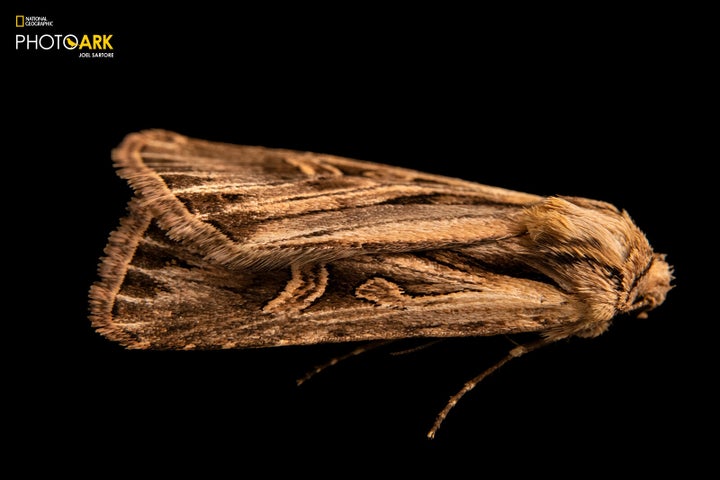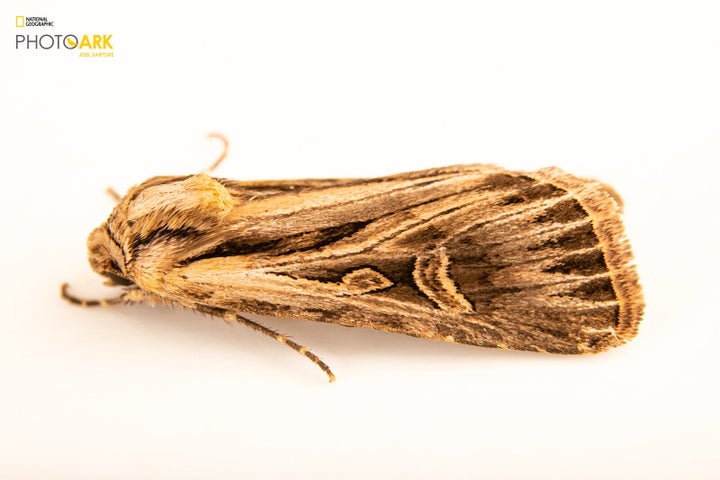An incredibly rare species of moth — dubbed the long-toothed dart moth — has finally been cataloged alive on camera by National Geographic photographer Joel Sartore.
The moth, known by the scientific name Dichagyris longidens, was the 11,000th species added to the National Geographic Photo Ark, a painstaking project by Sartore to take portraits of the approximately 15,000 species residing in zoos and wildlife sanctuaries across the world.
The long-toothed dart moth belongs to the moth family Noctuidae — a group often known as owlet moths, for their furry wings and nocturnal lifestyle.
Dichagyris longridens was first described in scientific literature in 1890, but has remained an extraordinarily elusive subject for nature photographers ever since. Typically spotted in Arizona, Colorado, New Mexico and Texas, the moth and its characteristic veined wings have thus far only been photographed as a preserved specimen in museums and private collections.
Satore believes his images are the first captured of a living long-toothed dart moth. According to a National Geographic press release, Bob Biagi, editor at the insect information site BugGuide, identified the moth and told Satore, “We have been waiting for your image for at least 130 years (the first live individual).”


Satore, who began the National Geographic Photo Ark in his hometown of Lincoln, Nebraska, in 2006, has traveled to over 50 countries to photograph species for the project, but 2020 threw a wrench into his plans.
“Due to COVID, all that traveling — and my project — stopped,” Sartore said. “Then one night, I noticed moths circling my porch lights right here in Lincoln, Nebraska. I readjusted my process for taking photos and the result was nearly a thousand photographs of species that live in America’s backyard.”
In a YouTube video celebrating the photographs of the long-toothed dart mouth, Satore said that capturing the insect on film proved that the “world is still full of wonders,” even during the midst of a global pandemic.
